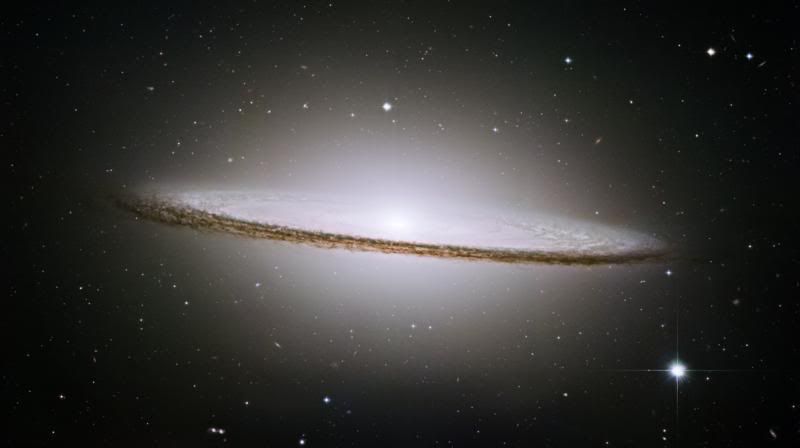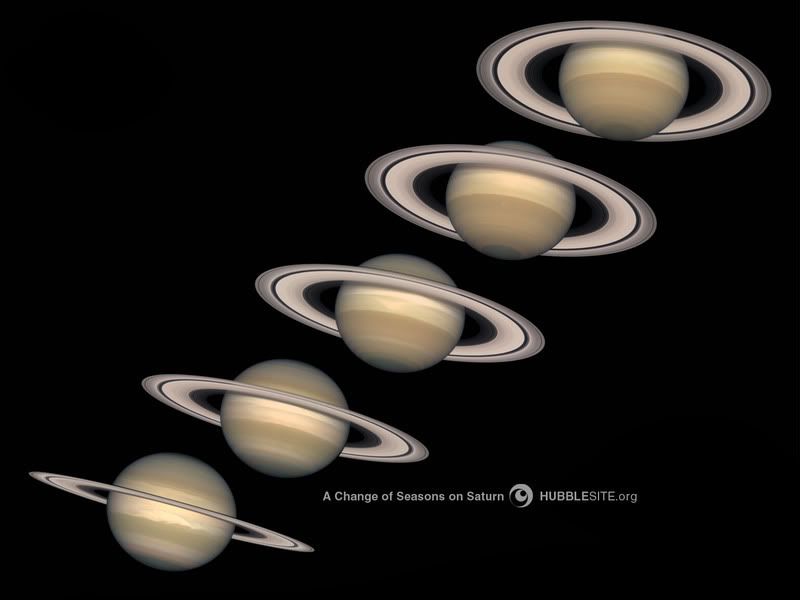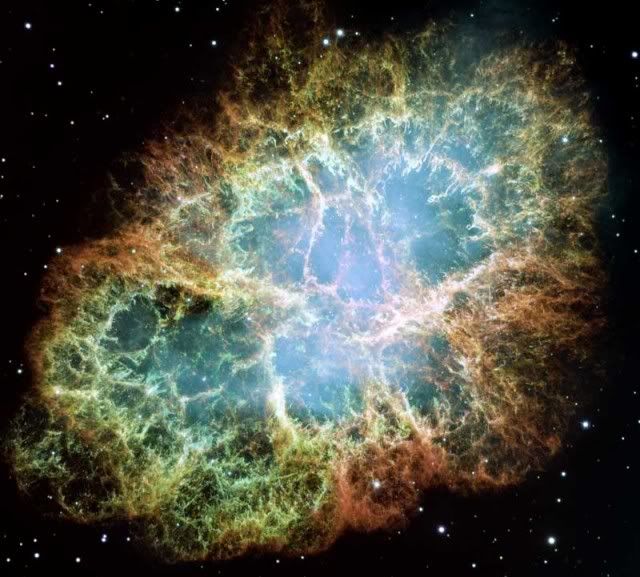
Sunday, June 21, 2009
|
 |
Royal Queen of Literature
|
|
Join Date: May 2005
Location: Forest of Fallen Stars
Posts: 7,585
Thanks: 2,427
Thanked 15,848 Times in 5,006 Posts
|
|
 Images From Space
Images From Space
The Hubble Space Telescope just got its last upgrade which will make this landmark telescope to work for further 4 to 6 years. Since 1990, HST has provided with some of the most amazing pictures that would not have been possible to observe from ground telescopes. The images from HST helped a lot in pushing the boundaries of our knowledge of our astronomy and cosmic phenomena.
(1) Most Distant Galaxies:
This is the deepest look into the Universe ever by astronomers, thanks to Hubble Telescope(HST). Being called “Hubble Ultra Deep Field (HUDF)”, it includes objects that were not seen before. They include ancient galaxies, which according to astronomers were formed about 700 million years after Big Bang. Situated in Fornax constellation, this image contains patch of sky with an estimated 10,000 galaxies in it. The size of the image taken from HST is 1/10th of diameter of full moon and it took one million laborious seconds for HST to take it.
(2) The Majestic Sombrero Galaxy:

Being one of the most photographed object in the sky, the majestic Sombrero galaxy is an object of aw for both professional and amateur astronomers all over the world. It is spiral unbarred galaxy with a brilliant white core surrounded by dust with a diameter of 50,000 light-years and 28 million light away from our home, Earth. Situated in Virgo constellation, although it can be seen easily through small telescopes, but never before such a high detail image with fabulous lights and colors of this galaxy was taken thanks everything to HST.
(3) Gas Pillars in Eagle Nebula:
Although at first they seem to be some enchanted castles or piece of abstract art, these pillars like shapes are columns containing cool interstellar hydrogen gas and dust. In astronomy, they are called Incubators: the places where stars are born.Thanks to HST, we have another stunning image at our disposal that makes you stop and wonder.
(4) Eagle Nebula:
Another one from Eagle Nebula, this is the image of billowing tower of gas and dust. The height of the tower is around 9.5 light years. This image was taken by HST in Nov, 2004 using the Advanced Camera for Surveys aboard the HST.
(5) Planetary Nebula:
This is the image of a star like our Sun taken by HST. With a bow-tie shape, the image is taken using telescope’s Wide-Field Planetary Camera 2 showing the dying star as it enters into white dwarf phase ( one of the phases of life cycle of star). The name “Planetary Nebula” was given to them on the basis of their resemblance to disks of the distant planets Uranus and Neptune. Our own Milky Way Galaxy contains thousands of these stellar relics.
(6) Monocerotis Light Echo:
The star named V838 Monocerotis has puzzled astronomers for last couple of years. In 2002, Monocerotis increased in brightness becoming 600,000 times more luminous than our own star Sun. The result was spectacular illumination of the surrounding interstellar dust which produced one of the most spectacular light echo astronomers ever witnessed. HST is keeping an eye on this light echo since 2002, whith each observation revealing more secrets of it.
(7) Supernova Remnant:
The ribbon you see are the remnants of a supernova, and it is just not a supernova but the most violent one ever witnessed by our forefathers. They say light from it reached our Earth in 1006 AD, creating a temporary star called “guest star” in the sky which had brightness level more than Venus and it lasted for two years. Being named SN 1006, the above image was visible to humans without any optical aids but only for few seconds.
(8) The Whirlpool Galaxy:
Also called M51, above is the sharpest image of the galaxy ever taken courtesy of HST in 2005. The spirals show the places where newly born stars reside, while older stars reside in the core of this spiral galaxy depicting that the arms are star forming factories. When you look at the upper right portion of above picture, you notice that another galaxy called NGC 5195 appears to be tugging the arms of whirlpool galaxy but latest images have shown that it is passing behind this galaxy.
(9) The Seasons of Saturn:

The above picture contains movement of Saturn planet captured through HST from 1996 to 2000 depicting its different seasons. Yeah, the Saturn does have season just like out Earth but they each season is around four to seven years long. This can be explained as the Saturn movement around Sun takes 29 years while our Earth takes one year. From the images, you can clearly see how Saturn’s rings move from edge-on to full view. The tilting of the Saturn rings can be explained of the fact that it is also tilted to some angle just like our Earth.
(10) Crab Nebula:

Being the largest image ever taken by HST, The above picture covers area of 12 light years, and is made by assembling 24 individual images. Crab Nebula, which is in fact the remnant of a supernova, the light from it reached earth in 1054AD. The colors in the nebula are due to hydrogen, oxygen and sulphur in the clouds.
Honorary Mention : The Horsehead Nebula
Part of the Orion constellation, The Horeshead Nebula as the name says looks like a horse’s head but it is beautiful nonetheless. It is actually a dark cloud of gas and dust. In a 2001 vote, people from around the globe selected Te Horsehead Nebula as the object they wanted the Hubble Space Telescope to observe and NASA brought us some great pictures.
A wider view of the nebula :
__________________
The Me you have always known, the Me that's a stranger still.
|